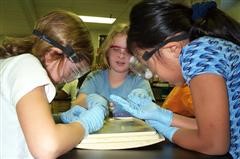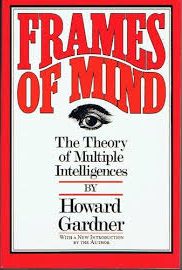Multiple Intelligences Newsletter, Vol 29, No 1
August 14, 2019
Happy New School Year!
Hi MI Fans,
It’s the time of year when schools are embedded in enthusiasm. Everywhere (at least in the Northern hemisphere!), teachers, principals, and students are anticipating the start of another school year. Remember, educators, the kids are as nervous about day #1 as are you! Thinking about the role that MI can play in how classrooms are presented and how the year begins can start the year off in a powerfully positive way. Here are a couple of specific suggestions about how you can use MI at the beginning of the school year to provide students with some extra momentum:
-
The new year brings use lots of new faces, and we should think about how MI can help us teach and them learn! For example, as we begin by learning about our students, we need to go beyond checking out previous year’s grades, g.p.a. and, even, gathering anecdotal information from other teachers. Those kinds of data are good, but they are also pretty narrow.We also need to make a point of asking kids about their MI, their interests and hobbies: “How do you choose to spend your spare time?” Often, that response tells us a child’s strongest intelligence(s). Recording responses enables us to create an MI Profile of a class. We can see in which intelligences most kids are strong and who falls within what intelligence strength area. That can help us think about how we can use MI in our teaching.

Typically – naturally – we teach from our MI strengths. Teachers who are linguistic tend to write and talk a lot (I’m guilty!), whereas those with a strong spatial intelligence use lots of diagrams, drawings, and art, regardless of the subject matter. But once we know a class’ MI Profile, then we need to figure out how we can use those intelligences to reach our children. This may require us stepping out of our comfort zones, or maybe we team-teach so we can tap into the MI strengths of a colleague. This is definitely worth the effort. No surprise, students learn best when they can use their strongest intelligences!
-
Teach about MI! For many of us, learning about MI was empowering. It validated some of our problem-solving strengths that didn’t seem valued in traditional schools. Rather than asking “How smart are you?” the question became “How are you smart?” Thus when we begin the year by talking about MI and letting students know that part of our/the educator’s job is to help them learn by using their strongest intelligences, it can provide a bolt of enthusiasm, (Of course, it also publicly raises our MI accountability, and that’s good too.)I know that this works! When I was at the New City School, the norm was that every year we would begin school talking about and teaching MI. How we did this varied by the age of students, of course, but every child understood that there were many ways to be smart and that we were going to help them use their smarts in solving problems. (That attitude and approach resulted in the “joyful learning” that characterized New City School.)

As part of teaching MI, ask kids to bring in photos and/or make drawings of themselves or other people using various intelligences. While some narrow puzzles only offer one pathway for solution, that’s far from the case in complex, real-life problems. Talented people find a way to use their MI so it’s important to help students understand that there are different ways to solve problems. This also reminds us to be creative and find ways to enable students to use their MI strengths in learning. Thinking differently about curriculum, pedagogy, and assessment isn’t easy, and we’re all too busy (What’s this year’s new priority?), but we must do this if we are to be true to our students.
“Are there differences between success in school and success in life?” is a question that I often pose in my presentations. And while the answer is an obvious yes, too often schools remain focused on preparing students for yesterday’s jobs. Kids do need to learn how to read, write, and calculate, but that should be the floor, not the ceiling. Through bringing MI into classrooms – particularly focusing on the personal intelligences – we can prepare students for a future in which the only constant will be change.
I’d be delighted to hear how you are thinking about and using MI. Please shoot me an email at trhoerr@newcityschool.org.
Thanks!
TOM
Thomas R. Hoerr, PhD
Facilitator of the ASCD MI Network
Scholar In Residence, UMSL
Emeritus Head of the New City School
Howard Gardner Retires!
After many years of teaching, writing, inspiring, researching, learning, encouraging others, presenting, mentoring, and pushing against the conventional wisdom envelope, Howard Gardner retired from Harvard University last spring. Rather, I should say Howard Gardner “retired” last spring.

You see, the quotes around “retired” indicate that even though Gardner formally stepped down from is professorial role at Harvard, he’s not going quietly into the night! Fortunately for us, Howard will still be very active. Here’s a tribute to Howard from the Harvard Graduate School of Education website: TributeToHoward.

Frames Of Mind: The Theory of Multiple Intelligences was published in 1983 (after Howard had already been awarded a MacArthur Genius grant) and it turned the educational world on its head. Simply put, Howard showed that humans have any different intelligence capacities. That led educators around the world to think differently about human potential, the goals of education, and their roles. These were exciting times!
Sadly, the “No Child Left Behind” Act of 2001 cut MI off at the knees. For many politicians, if it wasn’t measured on a standardized test, it wasn’t important; pure and simple. Some educators and institutions (such as New City School) weathered the storm and continued to embrace MI, but many U.S. educators reverted to multiple choice instead of multiple intelligence. The good news is that this tide is turning. More and more, I hear educators talking about the importance of SEL (social-emotional learning, i.e., the personal intelligences) and increasingly parents and employers express the desire for problem-solvers. Similarly, there is an appreciation for the desire to engage students in learning, and what could be more engaging than using MI?
Thanks to Howard for his many years of inspiring work, and I know that we all look forward to his future insights and contributions.
Concern for Others and the Common Good
Following up on point about how our society is shifting to value the Whole Child, here’s a very interesting report, Turning the Tide: TurningTheTide. It argues for looking a factors beyond test scores and extra-curricular activities in the college admissions process. What if a focus was “What kind of person is this? How has s/he worked to help others?” Shouldn’t that be significant? IF this becomes a reality, it will ripple to secondary and elementary schools and, for sure, the personal intelligences, SEL, will become even more important.
What do you think?
ASCD
This Professional Interest Community is sponsored by ASCD as part of their effort to improve the quality of education for all children. ASCD PICs are member-initiated groups designed to unite people around a common area of interest in the field of education. PICs allow participants to exchange ideas, share information, identify and solve problems, grow professionally, and establish collegial relationships.
You can learn about ASCD’s networks, publications, conferences, workshops, and the dialogues sponsored by ASCD at http://www.ascd.org. You can also register for the free ASCD SmartBrief.
Questions or comments? I’d like to hear from you! Please send me an email at trhoerr@newcityschool.org or contact me here.
